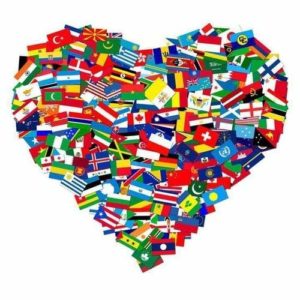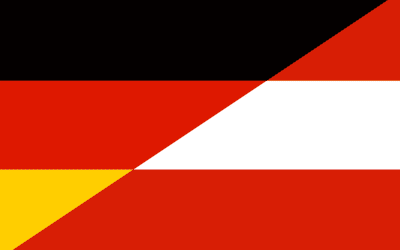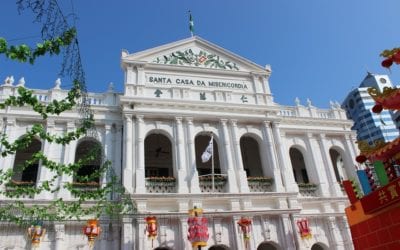Read our Translation Blog
Get the latest fun and facts from the language industry with our blog!
Need advice on website translation and localization?
Browse our ONLINE SHOP for ebooks on how to translate a website!
LingoStar’s Blog 
Welcome to LingoStar’s blog! On this page, you can find a lot of interesting and useful information about the translation industry. Explore topics on website translation and localization and how successful localization can influence your business to help your company grow and go global.
Language Blog Topics
On this blog, you can also learn about professional translators and interpreters, multilingual search engine optimization (SEO), the importance of socializing and networking and translators’ professional ethics. Quite often we write posts about the languages of the world, other cultures, and their traditions. Not only do translators convert texts from a source language to a target language, but they also help people communicate with each other, help establish international contacts, and are often prominent figures in the social, economic, and political life. Lastly, of course, we want you to have fun, so on our blog, you can find many posts that will entertain you and, hopefully, make you smile!
We hope you enjoy our blog and discover a lot of interesting things!
Wait, French Fries Aren’t French?
Demystifying French Fries We all eat them, almost all over the word, fried in oil or baked in the oven. Delicious French fries were seemingly born back in the 17th century, in a very small country unintentionally shadowed by a bigger one: France. It’s true that France gave the US the Statue of Liberty. However, it appears it did not give the world this well-known fried potato dish: Belgium did. It is time we demystify French fries and discover their real origin. A disputed birth certificate The Belgian claim for fries has been a long fight and is still not entirely recognized. Belgian lore says that the fry was born in the Meuse Valley, where villagers would fish in the river and fry their catch. But one day, during a harsh winter back in the 17th century, the river froze and made fishing impossible. The inhabitants had the idea to fry potatoes instead. The first fries were born. The thing is that France also lays claim to the French fry. Indeed, some people believe the first fries were seen and sold on Paris’ oldest bridge: the pommes Pont-Neuf. The Belgian authorities would like fries to be given UNESCO cultural heritage status. There exists today a petition for this. In the meantime, French fries and mayonnaise have iconic status in Belgium. A misleading American moniker You might think that French fries got their name because of the easy-to-pronounce alliteration, but this isn’t the case. Let’s look back at the origin of the English name. During the First World War, American soldiers came to Belgium to help defend the country. They... read moreConstructed languages – Na’vi, Klingon, High Valyrian
Rytsas everyone! Kirimvose for visiting our blog post about constructed languages! You just learned your first two words in High Valyrian: Rytsas – Hello – and Kirimvose – Thank you. David J. Peterson is the person who developed High Valyrian for the fantasy world in G.R.R. Martin’s book series The Song of Ice and Fire, also known as Game of Thrones. This is only one of many languages that were constructed for movies or TV series. But what’s behind these constructed languages? What rules do they follow? Let’s have a look at some of the most popular constructed languages for movies and series worldwide. Basics about constructed languages First of all, a constructed language is a language that was consciously invented by one individual and that has an elaborate linguistic system consisting of a specific phonology, vocabulary and grammar. Invented language, planned language and artificial language represent three of the many names for this phenomenon. As opposed to other languages we know such as English, French, Spanish, Japanese, etc., constructed languages have not evolved from thousands of years of development. There are many different reasons why people create new languages, for example: universal communication, research on already existing languages, and most importantly for our topic, to make a fictional world seem more authentic. The process of inventing a new language is complex. Thus, it is mostly professional linguists who do the job. There are two types of constructed languages – a posteriori languages and a priori languages. A posteriori languages contain aspects from already existing languages. Moreover the elements are usually simplified and mixed with other ones. A priori... read morePopular Places in Germany are Known by Everybody – Try New Things
May the Popular Places in Germany Be Popular Everyone knows Berlin, Munich, Hamburg, Cologne or Düsseldorf. Everyone also knows Bavaria, the Black Forest National Park or Neuschwanstein Castle. And certainly, there is a reason why everyone knows these popular places in Germany: they are beautiful, there are many (German) things to do and they overflow with tourists. But Germany has so much more to offer than these big cities and Bavaria. German Cities and Architecture If you really like cities, go to the west of Germany to a region called “Ruhrpott” in North Rhine-Westphalia. In this region there are a couple of big cities close together and well-connected by public transport. It may not be the most colorful place to be in Germany, but definitely worth visiting. In addition, cities like Cologne, Düsseldorf and Bonn are located there. Another city worth mentioning is Cochem. It is a nice colorful city built directly next to the Mosel River. Take a stroll along the promenade, for instance, observed by the Reichsburg Cochem, the Medieval toll castle, rebuilt in fairy tale style in the 1870s. The castle dates back to the 12th century. Meanwhile, modern looking house façades pair up next to half-timbering houses and the stone constructions of the Enderttor, the largest of Cochem’s three Medieval city gates. Cochem, however, is not the only city that offers rivers and castles. You will find them in many other places as well. Half-Timbering Houses If you are interested in architecture, you’ll like the historic old German towns, filled with many buildings in Fachwerk ‘half-timbering’. The UNESCO World Heritage City Quedlinburg, for instance, offers... read moreAustrian German – A Standard Language Variety
How to categorize Austrian German German is a pluricentric language, just like English. This means that there are several standard varieties that exist in different germanophone countries, such as Austrian German. A ‘language variety’ is a general term for a specific version of one language and when it is a ‘standard variety’, it is usually used publicly and considered prestigious. However, a language variety is not to be confused for a ‘dialect’. While dialects mainly appear in the spoken language with different forms of pronunciation or with slightly different grammatical structures, a standard variety manifests itself also in written language and its structures are considered as the correct standard for that country. One example of this is Austrian German, whose relationship to Standard German is comparable to that of British and American English. Austrian German and Standard German vocabulary in comparison One aspect that distinguishes Austrian German from Standard German is the vocabulary. Therefore, unique terms can be found in all areas of life. For example, in Austria, you go to the Kassa (cashier) instead of the Kasse. ‘Stairs’ are called Stiege, but in Standard German you say Treppe. And also, a very common word is Jänner for Januar (January). In the culinary field, there are many differences between Austrian and Standard German. For example, ‘cream’ in Austria is Schlagobers while in Standard German, you say Schlagsahne. In Austria, Aprikosen (apricots) are Marillen, Puderzucker (powdered sugar) is Staubzucker (literally dust sugar) and Quark (curd) is Topfen. And when it comes to drinks, in Austria, you cannot order a Weißweinschorle (sparkling white wine), you have to ask for a Weißer... read morePerceptions of The German Language to Be Examined Carefully
The Most Common Perceptions of The German Language February 21st is International Mother Tongue Day. As a German I would like to use this day as an opportunity to learn more about my own language and how other nationalities perceive German in particular. Therefore, I would like to have a closer look at perceptions of the German language. Based on my experiences and quick research on the internet, there are two main perceptions of the German language that I will have a closer look at. German Sounds Harsh and Angry Nice-Sounding Perceptions of The German Language? Opinions diverge on one point, namely if the German language sounds nice or not. On the one hand, people have told me German is a beautiful language. On the other hand, people say it sounds as if we are fighting the whole time! Fun fact: Germans think that about, for example, Arabic. In any case, there are many videos online comparing German to other languages, but if you look at the languages they are comparing, they are Romanic languages that have a totally different melody than German. Furthermore, German is pronounced in an especially harsh way in the videos, so the perception of the language is skewed. These videos are exaggerations for entertaining purposes only. The German Glottal Stop What German does have that most other languages don’t is the glottal stop. Languages like Danish and Arabic have it, too, but German uses it in an excessive way. The glottal stop is used in front of a vowel if the vowel is at the first position of a syllable and is like a... read moreChinese New Year: a celebration full of symbolic meanings
A very symbolic Chinese New Year Chinese New Year has come! It’s not only China that celebrates this new beginning, also other countries such as Thailand, Cambodia, Indonesia, and Malaysia. Chinese New Year, also known as Spring Festival or Lunar New Year, is a big event for all who celebrate it all over the world. This festive period is full of symbolism; read on to find out more! Not only the Year of the Pig Chinese symbolism is everywhere from Chinese New Year’s Eve to the famous Lantern Festival. For instance, one of the most well-known symbols is marked by the Chinese lunar calendar: the Chinese zodiac. 2019 is the Year of the Pig. However, many other images also come into play during a special evening: New Year’s Eve. What happens on Chinese New Year’s Eve? Basically, communities celebrating will eat all day long with people they love. This very important get-together meal is not just about food. It is also full of auspicious symbolism. Let’s immerse ourselves into Chinese culture! More than just a fish – auspicious symbolism Myths and customs dictate that Chinese New Year’s Eve includes a perfect and complete dinner, symbolizing a good start for the new year. To do so, food that is considered lucky is served to bring good luck for the coming year. The way dishes are prepared, served, eaten, and how they are called is what matters most when it comes to meanings. Indeed, the appearance of the dishes is an important aspect, but puns are not uncommon too. Take the fish, for example. In order to do it the right... read moreGerman Terms of Endearment as a Subtle Show of Affection
The Use of German Terms of Endearment It doesn’t matter if they are partners, friends, children or pets: If you want to show verbal affection, you can use terms of endearment. And German is no exception. So, what are German terms of endearment? Are they very different from English? Most Common German Terms of Endearment The most used German terms of endearment seem to be the most boring ones, like Schatz ‘treasure’ with its variations Schatzi or Schätzchen. That one is so common that people make fun of it. Furthermore, some German people don’t use terms of endearment at all, which probably fits in with the German stereotype. Why invent a name if you already have one? Other common German terms of endearment are Maus/Mäuschen ‘mouse’, Hase/Häschen ‘rabbit’, Süße/-r ‘sweetie’, Liebste/-r ‘the most loved one’, Engelchen ‘little angel, and Bär/Bärchen ‘bear’. So, maybe German people do like their endearing names! Especially animal names, although this might not be only a German trait, since, for instance, Polish also uses animal names for their terms of endearment. As you can tell, you can call your loved one pretty much any animal name. Besides, you can make the name even cuter by adding the suffix –chen. This way you don’t call your loved one ‘bear’ but ‘little bear’, which shows even more affection. The suffix –i /y works in the same way: Hasi, Mausi, Bärli, and with first names Isy, Benni, Matthi. Less Used, But More Creative German Terms of Endearment There are German terms of endearment that are a little bit more creative, such as Schnucki, Schnuffi, Knuddel, Knuffi, Schmusi. They... read moreGerman and English Idioms – Languages’ Blessings in Disguise
Wrap Your Head around German and English Idioms Do you think idioms are a pain in the neck? Or do you have a soft spot for them? Well, let’s face it, if you learn a new language they will be part of your learning experience, come rain or come shine. Native speakers, however, use them most of the time without even realising it. So no need to beat around the bush, let’s get down to business and take a closer look at German and English idioms! How Idioms Developed Idioms are fixed phrases or expressions with a figurative meaning. Most of the time, the literal meaning does not express the figurative one at all, as in to kick the bucket. And it would sound weird to say, for instance, to kick the pail. Therefore, the words are set in stone. Sometimes, however, it is funny to play with idioms and deliberately change them according to the context you are in. Nevertheless, many idioms used to be literal, but became disconnected from their original meanings. Consequently, they only exist in their figurative meaning nowadays. For some idioms you can trace this development, for example, to let the cat out of the bag. Others, in contrast, are very ambiguous and it is not clear what their origin is, for instance, to pull one’s leg. Read further for the origins of these idioms. Some idioms have a transparent meaning. In other words, even as a non-native speaker you can figure it out, because they are logical, like the early bird catches the worm. Maybe it is a concept that you also have... read moreGerman Compound Words in All Their Long-Phrased Glory
Charming German Compound Words In case you haven’t heard, the German language is full of huge words! The most popular example used by Germans (who also make fun of these long, weird words) is Donaudampfschiffahrtsgesellschaftskapitän. It translates into ‘Danube steamship company captain’. But they don’t always have to be that long and complicated. You will never hear the above word in a daily conversation, for example. However, there are smoother and easier ways to use German compound words. How To Built German Compound Words Firstly, German compound words are made of two or more words you would like to combine and can be any word type from nouns to prepositions. The combination of words or ‘parts’ can also result in any kind of word type: nouns, verbs, adjectives, etc. The last part of the compound word determines which type of word it will be. This is how Germans know that they are referring to grandparents (Großeltern ‘grand- or big parents’) and not to something that is as big as parents. One little tip for German language learners that struggle with articles: the gender of German compound words is also determined by the last part of the word. If you know that Kind ‘child’ is grammatically neutral, you know that words like Kleinkind, Spielkind, Enkelkind are neutral, too, even if you don’t know what they mean. How They Convey Meaning Another good thing to know about German compound words is how the different parts influence each other. On the one hand, the first part describes the second part in more detail and specifies it. That is why Zeitungsindustrie means ‘newspaper... read moreMacanese: a Chinese-Portuguese mixed language
Chinese, Macanese and… Portuguese? Hundreds and hundreds of languages in China Chinese is the most common term to indicate a range of different languages, among them Macanese. Based on the number of native speakers throughout the world, Chinese is the most spoken language all over the world. It is official in Taiwan, Singapore and Malaysia. However, Chinese-speaking communities can be found basically everywhere. There are Chinatowns across the globe. The most famous are in NY, London and Toronto. Among all the different varieties of Chinese, two standards (spoken and written) exist: Cantonese and Mandarin, and Traditional and Simplified. Our previous blogpost is about some clarification on their differences. Nevertheless, China is a huge land of giant metropolitan cities like Beijing or Shanghai and home to about six thousand small villages. Its people speak more than 200 different languages generally described as dialects of Chinese such as Pekinese, Shanghainese, Xiang, Taishanese, etc. Just Chinese? Not in Macau Meanwhile, there are not only speakers of Chinese and its various dialects in China. Macau is an autonomous territory of 30.5 km2 with a population of 650,900. That is why it is one of the most densely populated regions in the world. Macau was a Colony of the Portuguese Empire from 1557 until 1999. Finally, Portugal transferred the sovereignty to the People’s Republic of China. People consider it the last European Colony in Asia. Although 20 years have passed since then and despite the distance from the mainland, the Portuguese influence is still prominent in Macau, both artistically and linguistically. You can walk on streets ornamented with calçada portuguesa surrounded by red lanterns... read moreSilbo Gomero – A Whistle in the Spanish Language
Silbo Gomero is Spain’s Exotic Whistling Language Languages can use so many different forms of sounds. You probably have heard about languages that use clicks like Xhosa in South Africa. It sounds more or less exotic because only rare languages use them. Even more rare if you think about whistling. But that is exactly what Silbo Gomero, a languages in the Spanish territory, does. Languages of Spain Spain is a European country that is home to many different languages. These languages possess a co-official status with Castilian, the standardised language variety in Spain. In Barcelona, the Balearic Islands, and Valencia, Catalan is the co-official language along with Spanish. The same place takes Euskadi in the Basque Country. In the Iberian Peninsula there are many varieties, dialects and even distinct languages:. These are Aragonese, Galician, Valencian (the variety of Catalan spoken in Valencia), Andalusian dialect, Portuguese. Even English is spoken in Gibraltar. But there is another one far from the mainland, plunged in the Atlantic Ocean and close to Africa. On a small island belonging to the Archipelago of Canary Islands, a language exists that is not a spoken one: Silbo Gomero. The History of Silbo Gomero Silbo Gomero or simply, “el Silbo” (the whistle), takes its name from the Island of La Gomera. The primitive inhabitants of the Canary Islands, the Guanches, settlers from North Africa, developed it since needed a way to communicate across long distances, especially among shepherds. In fact, Silbo Gomero is perceptible up to 5 km away. Nowadays, people still use it to communicate because there are places on the Islands that are not covered... read moreDeepL Translator – The New Wondrous Translating Machine
What Exactly is DeepL? The DeepL Translator has taken off like a rocket and is going strong. It is the new miracle in AI (artificial intelligence) translation because it translates as fast as other translation machines like Google Translate and Microsoft Bing Translator. However, its translations sound more natural. So, what is DeepL? DeepL is a German company founded by the developers of Linguee. DeepL’s focus is to develop more AI products for the language industry. The company released its DeepL Translator in late August 2017 featuring English, German, French, Spanish, Italian, Polish, and Dutch language translation. Russian and Portuguese were added in December 2018 due to user demand. They continue to add more languages and next they will release Chinese and Japanese. How Does the DeepL Translator Work? Since DeepL uses linguee.com as a resource, it already has a huge collection of curated translation data at its disposal. It uses neural machine translation. This is one of the many approaches for machine translation, predicting the sequence of words in a sentence. DeepL, however, does not want to talk about the specific model they use. Other companies have made theirs open source. Nevertheless, Jaroslaw Kutylowski, DeepL Chief Technology Officer, says that they keep on top of the current science of machine translation and combine their findings with their own ideas and experiences having developed DeepL. The “Men vs. Machine” Debate The release of this unexpectedly accurate machine translator by DeepL has enflamed the debate about human and machine translation once again. While some translators fear for their jobs, others stay calm. They are rather interested in what is technologically... read moreTranslations of Restaurant Menus: The Next Frontier
It Means What?? Weird translations of restaurant menus Have you ever skimmed through a multilingual restaurant menu that was translated into you native tongue? Quite a few thinks can happen: it makes you laugh, it makes you shake your head in disbelieve or it leaves you utterly puzzled. Everyone needs to eat. Also or maybe above all in countries in which you do not understand the native languages. That is why translations of restaurant menus are so important. Google is not your best friend in many cases either. It once wanted to make me believe, that one Turkish dish means “infertile”. Why It Is so Important So, depending on the country and language, food around the globe will have different names and translations. The translation of restaurant menus can be one of the most important marketing strategies for a restaurant. If the exotic names of dishes are not translated, customers will not dare to try them, and thus, they will stick with the same old traditional food. There is no room for innovation at a restaurant where customers always order the same dishes. On the other hand, some restaurants translate their menus using automatic translation tools. As a result, you will find hilariously inaccurate translations. These translation engines often provide literal translations that make customers laugh and, above all, make restaurants look foolish. For example, take bonito a la plancha, a Spanish grilled tuna dish, translated as “beauty to the iron”. Not quite capturing the meaning there! Funny Examples of Translations of Restaurant Menus We thought it might be funny (and educational) to find some more examples to illustrate... read morePatagonian Welsh – The Language of Little Wales Across the Ocean
Ever heard of Patagonian Welsh? Down in the South of Argentina, in the Chubut province of Patagonia, you will not only hear Spanish or other native languages associated with Southern Argentina. You will also hear Patagonian Welsh. There are about 5,000 speakers. But, how did it end up there? How Welsh Came to Argentina During the industrial revolution, some Welsh people were afraid of losing their cultural heritage. Therefore, and among other reasons, they decided to immigrate to the US. But there they would be assimilated to a new language and lifestyle. So, they went looking for a better place to conserve their language, culture and tradition. They considered Vancouver Island. But they finally decided on Patagonia as it seemed to have everything required. After a two-month journey by ship, about 200 people arrived on the Argentinean coast in July 1865. They struggled greatly at first because of the very different environment and conditions they had to face. Luckily, after some initial mistrust, they received help from and started trading with the native Teheulche Indians. Finally, they established their first permanent settlement called Rawson at the end of 1965. Ten years later, after discussions about the ownership of the land with the Argentinean government, they received ownership of the populated land. The Welsh made the land fertile. It looked as if their dream had come true with schools, chapels and a local government in Patagonian Welsh. However, more and more people were attracted to the prosperity, Welsh as well as non-Welsh. By 1915 about half of the population was non-Welsh. Simultaneously, the Argentinean government made Spanish the mandatory language... read moreCongress of the Humanities and Social Sciences at UBC, Vancouver
The Congress of the Humanities and Social Sciences will land soon in Vancouver The University of British Columbia will host this year the 88th annual Congress of the Humanities and Social Sciences. The Congress takes place from June 1st to June 7th. It is one of the most important academic events related to the above-mentioned fields. Also, the Congress “brings together academics, researchers, policy-makers, and practitioners”. Their aim? “To share findings, refine ideas, and build partnerships that will help shape the Canada of tomorrow”. The World-famous Congress of the Humanities and Social Science will be hosted at the UBC This Congress of the Humanities and Social Sciences is organized by the Federation for the Humanities and Social Sciences. Moreover, it usually attracts more than 8,000 attendees among scholars, students, researchers, academic associations and partners. So, for a full week, they offer public lectures, workshops and public events. Last but not least, they share their research findings. As a result, “Luminaries, researchers, practitioners, policy-makers and students from across Canada and abroad meet”. They also “share ideas and engage in discussions that have direct importance for Canada and the lives of Canadians.” The Congress’s Main Theme Even more, this year’s Congress of the Humanities and Social Sciences will revolve around the following theme: “Circles of Conversation”. Also, it “will open up much-needed space for dialogue, debate, and dissent”. Plus, it will “showcase creative critical engagements within and across disciplines”. For example, topics will be as diverse as sustainability, accessibility, global mobility, health, culture, education, etc.”. Eventually, it will emphasize the importance of engaging on art to be investigated creatively in relation... read moreTranslation Blog and News
LingoStar has been a language services provider in Canada, the USA, and Europe for more than a decade. We are proud to say that we cooperate with professional translators, interpreters, and other language specialists worldwide and work with over 100 language pairs. If you are looking for a reliable translation company, contact LingoStar! We are always ready to help you with your projects and documentation. Get a free quote online.














